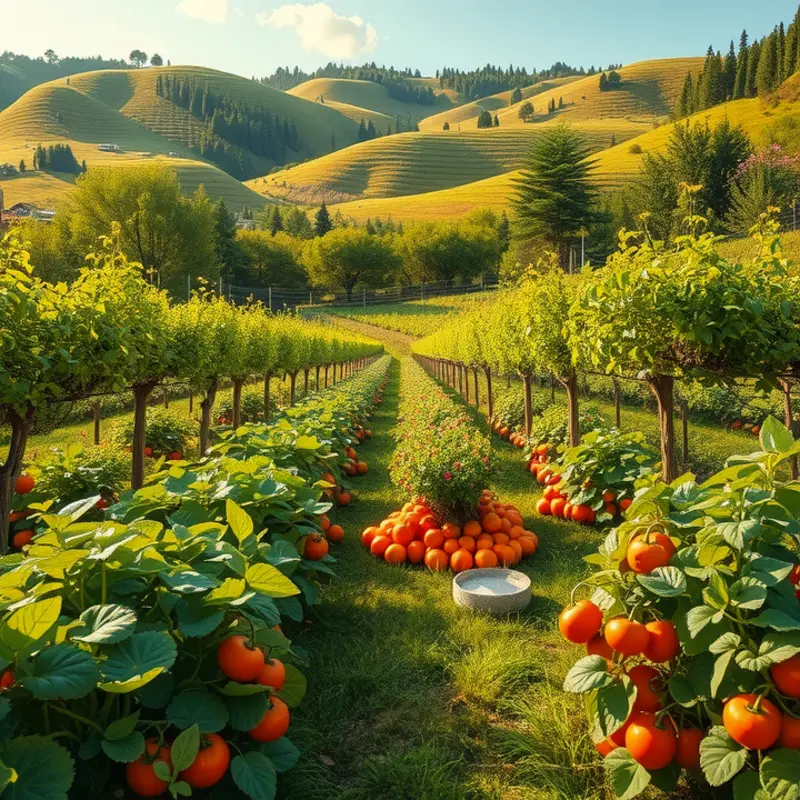Roasting is a timeless cooking technique that brings out rich flavors and textures in foods. Whether you’re preparing meats, vegetables, or even fruits, mastering the roasting method can enhance your culinary repertoire. With its simplicity and ability to create delectable meals, incorporating roasting into your cooking routine is an excellent way to impress family and friends. Here are practical tips to elevate your roasting skills, whether you’re aiming for a perfect roast chicken or beautifully caramelized vegetables.
Choosing the Right Ingredients

The foundation of a perfectly roasted dish lies in the quality and selection of your ingredients. Whether you’re crafting a sumptuous roast dinner or preparing a simple roasted vegetable platter, knowing how to choose the best meats, vegetables, and spices is crucial.
Selecting Meats for Roasting
When it comes to meats, choosing the right cut is essential for optimal flavor and tenderness. Opt for cuts like beef ribeye roast, pork shoulder, or whole chicken, which are known for their robust flavors and adaptability to various roasting techniques. Ensure the meat has adequate marbling, as the fat will render down and contribute to a juicier and more flavorful result.
Visit local butchers where possible, ensuring your meat is fresh and of high quality. Many butchers offer advice on the best cooking methods for different cuts, which can elevate your roast.
Picking the Perfect Vegetables
While meats are often the stars, vegetables can transform a roast into a well-rounded masterpiece. Hardy vegetables like carrots, potatoes, sweet potatoes, and Brussels sprouts are excellent choices. When selecting vegetables, look for vibrant colors and firmness, indicating freshness and viability for roasting.
Try seasonal varieties for distinct flavors and textures, and consider mixing them for a diverse culinary experience. Vegetables like bell peppers, onions, and zucchini contribute sweetness and a hint of caramelization when roasted.
For a creative twist, explore recipes like the Mediterranean Chickpea Salad, which highlights vegetables in delightful new ways.
The Vital Role of Spices
Spices can dramatically enhance the depth of flavor in your roasts. Classic combinations include rosemary, thyme, garlic, and black pepper for a traditional profile. If you’re feeling adventurous, try spices like smoked paprika, cumin, or coriander to introduce a spicy or exotic element.
Creating a rub or marinade with a blend of spices can not only infuse your meat with flavor but also help form a desirable crust. Whether you prefer a simple salt and pepper seasoning or a complex spice blend, ensure you taste as you go to maintain balance.
Considering Dietary Preferences
As diverse as our taste palates are our dietary preferences. Being mindful of this helps tailor your roast for any occasion and guest list. For those following a keto diet, focusing on meats with higher fat content and low-carb vegetables is crucial. Explore options like roasted zucchini with avocado pesto for a healthier take.
Selecting the right ingredients is not just about choosing what’s available but making thoughtful decisions to maximize the taste and experience of every bite. The next chapter will delve into mastering roasting techniques to bring out the best in these ingredients, ensuring you achieve succulent and flavorful results every time.
Mastering the Roasting Technique

When it comes to mastering the roasting technique, understanding its nuances can be a game-changer for culinary enthusiasts. Preheating the oven is the first essential step. Without this, your dish might be exposed to a slowly increasing temperature, resulting in uneven cooking and a lackluster finish. Instead, a preheated oven ensures that the roasting process starts immediately, allowing for even cooking and that sought-after golden-brown crust.
Another crucial aspect of roasting is seasoning. It’s not just about salting your ingredients but understanding how different spices and herbs enhance flavors during the high-heat process. Whether it’s a simple sprinkle of salt and pepper or a complex spice rub, seasoning should be generous. However, balance is key. Overshadowing the natural flavors of your ingredients with too much seasoning can be as detrimental as under-seasoning.
Selecting the right temperature for roasting can seem daunting, but it is vital for achieving the desired result. Vegetables such as root varieties and squashes benefit from a higher temperature, between 425°F and 450°F, promoting caramelization and a tender inside. Proteins like chicken should aim for around 375°F to 400°F, ensuring they cook through without drying out. Remember, lower temperatures result in a longer cooking time, allowing flavors to develop gradually, which is ideal for hearty roasts.
A handy tip is to use a thermometer to monitor internal temperatures, particularly for meats. This prevents overcooking and ensures food safety. Besides, resting your meat post-roasting allows the juices to redistribute, enhancing the overall moisture and flavor profile of your dish.
For those incorporating vegetables in keto-friendly recipes, like the bacon-wrapped avocado fries, roasting them can amplify their flavors while preserving their nutritional benefits. The combination of high heat and natural oils brings out a decadent richness that makes vegetables shine as much as the main protein.
Finally, topping certain dishes with a finishing oil or a squeeze of citrus can elevate the roast to an entirely new level. This last-minute addition not only adds brightness and depth but also balances the dark, caramelized notes of roasted ingredients.
By mastering these techniques, you can transform simple ingredients into dishes bursting with flavor and texture, making each meal a delightful culinary experience.
Final words
Roasting is not only a cooking method but also an exploration of flavors and techniques. By understanding the importance of ingredient selection and mastering your technique, you can create memorable meals that impress. Next time you step into your kitchen, remember that with just a few simple adjustments and a mindful approach, every roast can become a delightful centerpiece. Celebrate your achievements and continue exploring the plethora of possibilities that roasting has to offer!







